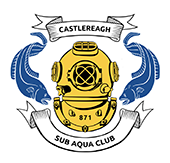
Castlereagh Sub Aqua Club was founded on the 3rd September 1975. We were the fourth Scuba Diving Club to be founded in Northern Ireland associated under BSAC.
Our club is a branch of the British Sub Aqua Club, the worlds largest diving club. Like all BSAC branches, it is run entirely by volunteers as a not-for-profit organisation. Our Club’s Ref no. is 0871.
We are currently the largest club in Northern with over 60 members at present.
ARTICLE LINKS:
In memory of the Laurentic’s lost souls
Elizabethan cannon resurfaces at Boyne museum
Hidden Elizabethan cannon resurface for scuba divers
#DiscoverUKdiving video competition winners announced

days
hours minutes seconds
until
Castlereagh S.A.C. 50th Anniversary
| The Cannon Makers (First published in “Mouthpiece” November 1985) |
| Research is underway in an attempt to establish if an Elizabethan vessel foundered in the vacinity of Larne Lough in the 15/1600’s. A visit has been made to the Armoury of the Tower of London to examine the cannon previously recovered from the site 8 years ago. This cannon is a bronze Saker made by John and Thomas Mayo in 1558 and ascribed to Mary Regina. It is unique in the fact that it is the only known piece to be cast by this family to be still in existence. (Who knows, there may still be another one down there!) There are two other cannon in the Tower’s collection believed to be from “a wreck off the Irish coast”, but the location and identity of the vessel are unknown. These are also bronze Sakers and were made by Robert and John Owyn in 154?. Our guns are bronze Falcons and were made by Thomas and John Owyn in 1559, and ascribed to Elizabeth Regina. The Owyn’s were a close-knit family of founders who like their contemporaries cast both bells and guns. The two senior members were brothers, John and Robert, who worked in partnership and on most of their guns signed themselves “John & Robert Owyn Brethren”. The made an unfortunate start in 1529 when they were sharing the foundry at Houndsditch with Peter Baude. Their accounts were examined by the Surveyor of Ordinance, Henry Johnson, a gunfounder himself. He discovered that they were claiming 12lb. out of every hundredweight of metal to be wastage, which he thought was excessive. Becoming suspicious he searched the premises and found a 43cwt. cannon which the brothers at first claimed as their own, but then confessed to have made out of the waste. It did not take them long, however, to remove this unfortunate impression, and by 1536 they were well established, casting guns at Houndsditch and in the King’s foundry at Calais. The King heard of a fine double-cannon which they had made there and asked to see it. The Master of the Ordinance, Sir Christopher Mores, wrote to Lord Lisle at Calais: “My Lord, as you love the two young men, and would do for them, Robert and John Owyn, see that the said piece may be well laden, for I have bid them make 12 new pieces for the King, and when his Grace sees them and the double cannon together I doubt not it will be for their preferment”. That it was can be judged by the fact that the following year they were put on establishment with a pay of 8d. per day, and in 1540 were granted the tenement called “the Belfounders House in Houndsditche”. They became upright and respectable members of the parish of St. Botolph Aldgate, serving as church wardens and helping to repair the church. Never-the-less there was still a black sheep in the family. This was John Owyn junior, apparently a younger brother, who in his will made provision for a natural son, at the same time denying his responsibility. He was drowned near London Bridge in 1553, his companion being another gunner Gilbert Pott who had just had his ears cut off for seditious and traitorous speech. The family was obviously on good terms with the Tower community. Both Robert and another brother Thomas, also a gunfounder, left sums of money in their will’s to the “Company of Gunners” and to the Yeomen Warders “to make merie withall”. Robert’s son Samuel duly became “one of her Majesties Gonnefounders for Brasse and Copper Ordynaunce” and continued the foundry business which in 1589, was apparently, at “the signe of the Guilden Goun in Houndsditch”. Here he cast the great bell of St. Botolph Aldgate in 1599. Another of his bells, dated 1596, is at Thorington, Suffolk. He died in 1603, his will disclosing that he owned the house known by “the Signe of the Gonne in Houndsdiche”. His son, Israel, apparently the last of the line, was included in a list of official “Founders of Brasse Ordinance” in 1603. Other guns known to have been made by the Owyns are:- A Falcon recovered from the Mary Rose and dated 1537. A Falcon in the Museum of Carisbrooke Castle made in 1559. A Falcon in private ownership in Brading. Two Parish guns from the Channel Islands were also made by the Owyn’s, one made by John Owyn in 1551 for the Island of Jersey, and one made by Thomas Owyn in 1550 for the Island of Guernsey. Records survive in the form of “Bills of Sale” from the Owyns to the Monarchs but do not indicate to which vessels the guns were allocated. Research is continuing both locally and across the water in an endeavour to determine a list of possible vessels lost during the years 1559 to 1660 and the location of their loss. By a process of elimination and comparison with the known armament to be carried by each vessel a shortlist will be compiled for further examination. This may lead to the name of the vessel but on the other hand if the boys under the water can come up with the ship’s bell we will really be in business! Derek Mathews 30th October 1985 |

